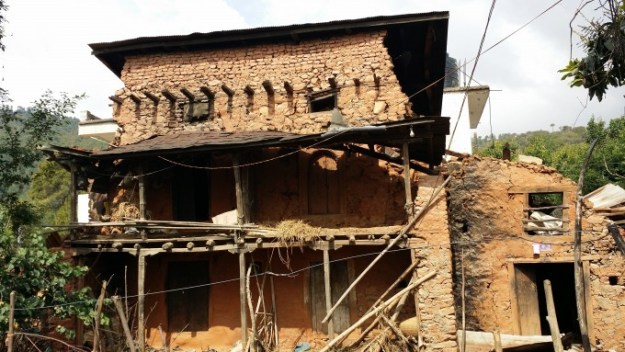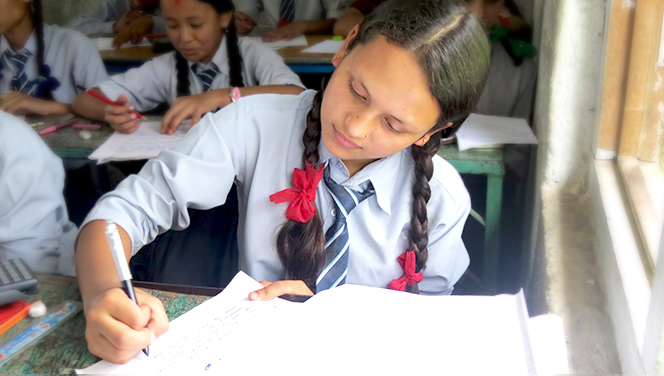Earthquake Resistant Buildings – The Next Challenge
Post by Niroj Shrestha, edited by Harinee Suthakar
Pharping is a diverse town in the southern belt of Kathmandu. Initially a village comprised of many ethnic groups, it gradually grew into the vibrant Dakshinkali Municipality. It is a community where the Tamang, Newar, Brahmins and Chhetri groups built houses unique to their cultures using local resources and indigenous techniques. Over time, technology surpassed native architecture. Now there are very few houses in remote areas that are built with only wood, bamboo, mud, or stone. The old homes stood tall until they were tested by the tremendous earthquake and aftershocks following Saturday, April 25. In the city area of Pharping, some concrete buildings that were retrofitted withstood the shakes.

Many homes that were built with older materials like mud and stones collapsed during the earthquake

Structures like this government school in Simpani village were retrofitted to protect against the earthquake and survived without damage
On Tuesday, May 13, nature showed its strength again and many traditional homes and buildings that survived the initial quake were unable to handle the most recent tremors. The second earthquake even left cracks in concrete homes and further damaged homes and buildings that were already weakened by the first earthquake. Loss of life, people without shelter, and a shortage of food and water have been the most important concerns for everyone in Nepal. A month after the first quake we are starting to be concerned about education.

Unlike the retrofitted government schools, our community-based CLC (Community Learning Center), ASC suffered serious damage to buildings
Schools have already been shut for a few weeks. In Pharping, the schools that were retrofitted appear to be fine, but other schools like our community-based Shikharapur School suffered damage and are in need of repairs. Parents are worried about the safety of the buildings as are all of us who work to ensure not only the education of these kids, but also their safety. Parents are in a dilemma of whether to send their child to school or have them fall more behind in their studies. All school buildings must be properly inspected and fixed before their scheduled reopening.

These premises are where we hold most of our foundation team meetings as well as our mentoring programs, so it is very important for us to be able to get these buildings fixed and operational again
Building a home on your land is something that families and individuals in Pharping take great pride in. People have invested a lot into their homes, and sadly have lost most of their wealth in the damage. The marks left were not only physical but also emotional. Moving forward, we as a community will work to build with such dangers in mind, but the government will also need to ensure that all people know the proper technology and techniques to build earthquake-proof homes. The soil and land must be examined to ensure the safety and sustainability of one’s investment. This disaster has taught us all very difficult lessons.

It is great to see our community coming together to rebuild important institutions like our community learning centers
Mother nature’s power was only one of the reasons why we suffered so much damage. The negligence in proper planning and community building is the other key reason. However, we are looking at this as an opportunity to learn and to educate our communities about building precautions and safety procedures during a disaster. Today we must mobilize our entire community: our youth, adults, and elderly to put forth their best efforts to build a better and more resilient future. As always education is the foundation of a stronger future in Pharping as well as Nepal.
- Rukmini Scholars get inspired by Indira Didi - May 30, 2017
- Welcoming new Scholars for 2017 - May 5, 2017
- Celebrating International Women’s Day in Nepal - March 17, 2017
- Reading Aloud with the Community in Pharping - February 16, 2017
- Dr. Meera Hada Provides Valuable Service While Inspiring Many - February 14, 2017

